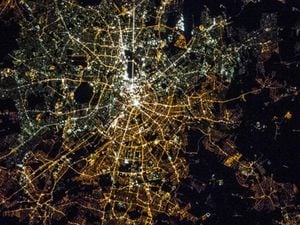Using low-cost, energy-saving LEDs might be doing more harm than good
Scientists say they are contributing to an increase in light pollution.

Artificial lights are growing brighter every year and it spells bad news for us all, scientists say.
An analysis of satellite images has shown light pollution has increased by 2% a year from 2012 to 2016.
The researchers in Germany say their findings coincide with the switch to energy-efficient and cost-saving light-emitting diodes (LEDs) for outdoor lighting.
However, not all satellites can detect blue light generated by some LEDs, which makes the scientists believe light pollution is far worse than thought.
Study leader Christopher Kyba, of the GFZ German Research Centre for Geosciences, said their findings shatter the long-held notion that using energy-efficient lighting increases awareness of light pollution.
He said: “Honestly, I had thought and assumed and hoped that with LEDs we were turning the corner. There’s also a lot more awareness of light pollution.
“It is quite disappointing.”
The researchers say that the biological impact of surging artificial light is significant, which can lead to anything from disturbed sleep in humans and animals alike to disruptions in migration and reproduction of birds, fish, amphibians, insects and bats.

The findings showed stable levels of night light in countries such as the United States, Netherlands, Spain and Italy where artificial light is already significantly bright.
Asia, Africa and parts of South America have also seen a surge in night lighting, with more and more places installing outdoor lighting – given its low cost and the overall growth in communities’ wealth.
The only places where the researchers found dramatic declines in night light were in areas of conflict such as Syria and Yemen.
Study co-author Franz Holker, of the Leibniz Institute of Freshwater Ecology and Inland Fisheries in Berlin, said: “Many people are using light at night without really thinking about the cost.
“Not just the economic cost, but also the cost that you have to pay from an ecological, environmental perspective.”
Kyba and his colleagues recommend avoiding glaring lamps whenever possible – choosing amber over white LEDs.
They also advice on using more efficient ways to illuminate places such as parking lots or city streets, saying dim, closely spaced lights, for example, tend to provide better visibility than bright lights that are more spread out.
The study is published in Science Advances.





